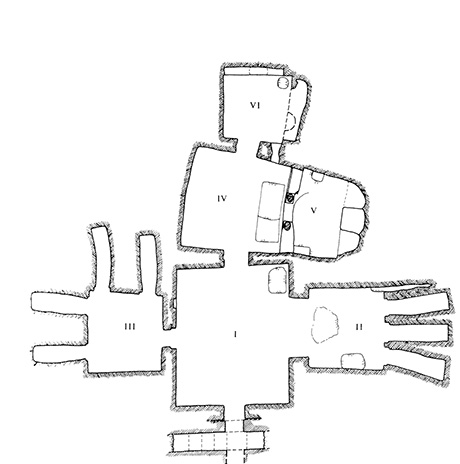Image Details

DRAWING ADOPTED FROM AMOS KLONER, “THE CAVE CHAPEL OF HORVAT QASRA,” ‘ATIQOT 10 (1990), P. 130.
FROM TOMB TO CHAPEL. Excavations outside the sunken entrance to the Horvat Qasra cave complex revealed features from both its initial Jewish and later Christian use. The entrance itself originally had a decorated façade surmounted by a Doric-style frieze, double columns on either side, and a roofed vestibule—all characteristic of Judean hillside tombs of the first century CE. Centuries later, when the cave was repurposed as a chapel honoring St. Salome, a small monastery with several rooms was built in the courtyard, separated from the cave entrance by a wall with six decorated pilasters. Inside the cave, the earlier Jewish burial chambers were reorganized for Christian worship and prayer (see plan above).
